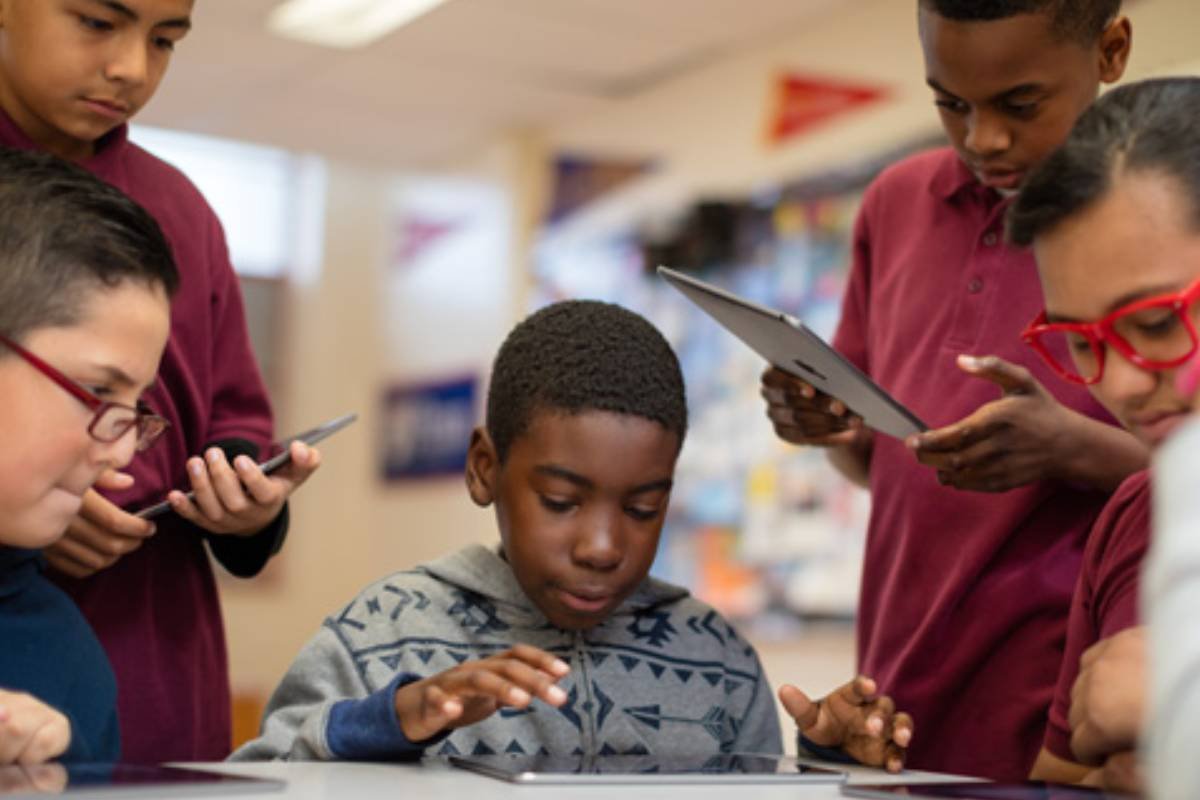Technology access forms the most critical prerequisite of modern education, yet schools in poor communities often lack the means to provide students with these critical tools and requirements. The ConnectED Program was launched at the end of 2014 by Apple with a concentration on integrating technology in schools across America. Through this, it established the provision of technology, training, and support to a wide number of underfunded schools; hence students from every segment of society have a shot at prospering in a digital world. This paper explores a theme on how Apple’s ConnectED Program demonstrates corporate social responsibility, its ripple effects, and findings that are generally on students and teachers from across the United States.
What is the Apple ConnectED Program?
In 2014, Apple introduced the Apple ConnectED Program with the main purpose of filling the technology gap within disadvantaged schools across the United States. With this program, Apple provided above $100 million worth of iPads, MacBooks, and other forms of technology to more than 114 schools found in economically disadvantaged areas. Additionally, the teachers received professional development and training on how to effectively utilize the technology in the classrooms. ConnectED aims to enhance learning results by ensuring equitable access to new learning resources for students and to experience an environment of more engaging, technology-rich learning.
How does the Apple ConnectED Program work?
The Apple ConnectED Program works by providing under-resourced schools with the tools, training, and support necessary to integrate modern technology into their classrooms. Here’s how the program operates:

- Identifying Schools: Apple targeted schools that presented a high percentage of students who would be from economically disadvantaged backgrounds. Such schools did not have any technology, which would provide such children with modern education.
- Providing Technology: The company would provide the most basic technologies, which include iPads for the students, MacBook’s and iPads for the teachers along Apple TVs for classrooms. They would allow an interactive learning space by ensuring students have access to digital resources.
- Teacher Training and Professional Development: Apple provided professional development for educators to prepare teachers, train them, and provide a support experience on how to use devices, education apps, and digital tools in and out of the classroom.
- Ongoing Support: It was after the initial training that they provided continuing technical support and resources so teachers and administrators could maintain their use of the devices. It was the kind of support that would sustain the program over the long term.
- Creating a Sustainable Impact: It was not only about bringing technology into these schools but also making sure that the impact would be sustainable. To this end, Apple empowered teachers with what they needed to know and to be skilled in so that changes might endure over time in how to use technology in education.
Overall, the Apple ConnectED Program is designed to improve learning outcomes by equipping both students and teachers with the digital tools and skills needed for a tech-driven world.
Impact of the Apple ConnectED Program

The Apple ConnectED Program had a significant impact on students and teachers in underserved schools:
| Impact | Description |
| Enhanced Student Engagement | iPads provided interactive, personalized learning, increasing student participation and motivation. |
| Improved Academic Performance | Schools improved test scores, graduation rates, and skills with tech. |
| Empowered Teachers | Professional development empowered teachers to creatively integrate technology into lessons. |
| Increased Attendance | Technology boosts learning appeal, leading to increased student attendance and engagement. |
| Long-Term Sustainability | Teacher training and support expanded technology use, fostering lasting tech culture. |
| Closing the Digital Divide | The program ensured equal academic opportunities for low-income and affluent students. |
Also Read: In-Demand Programming Languages: A Comprehensive Guide
The Apple and ConnectED Initiative: Three Case Stories
The Apple ConnectED Program thus left a profound mark on education in underserved areas, contributing to both short-term academic gains and long-term improvements in access to technology and learning.

- Ridgewood High School: In rural Kentucky, Ridgewood High transformed with ConnectED’s iPads and MacBooks. Students engaged more with interactive science lessons, leading to improved performance and higher attendance.
- Lincoln Middle School: Chicago’s Lincoln Middle School saw a boost in student participation and academic results with ConnectED’s iPads and Apple TVs, enabling personalized learning and interactive lessons.
- Harmony Elementary School: In Texas, Harmony Elementary benefited from iPads and teacher training, enhancing reading programs and improving student performance and parent communication.
These stories showcase ConnectED’s impact in transforming education through technology and support.
Future of the Program
Plans to expand the Apple ConnectED Program will be very promising soon. Technology and innovation will evolve the new program to be adapted using augmented reality (AR) and artificial intelligence (AI) to create even more complex and personalized learning experiences. Professional development and support programs for educators to tackle new technologies will be one of the top priorities for these initiatives. Future partnerships with other technology firms and learning organizations can expand the scope and influence of the program. Better means of evaluation to assess the efficacy of the program will also improve strategies and scale better practices to impact more schools.
Also Read: 10 Best Programming Languages for AI
Conclusion
The Apple ConnectED Program has already demonstrated its potential to deeply shape the opportunities available to educate students in underserved schools through technology. Granting every student equal access to these critical devices along with full training and support demonstrates the change in the learning environment and equips educators with better outcomes for their students. As this program goes forward, it will continue to shrink the digital divide by absorbing advanced technologies and expanding its reach in helping scale educational equity and excellence.










